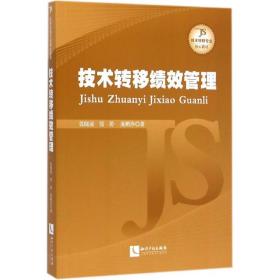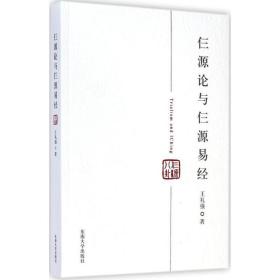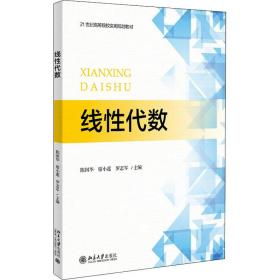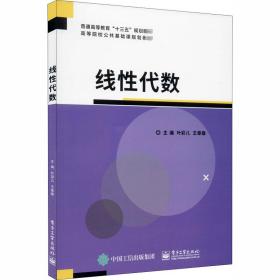
线代数(第5版) 大中专理科计算机 作者 新华正版
¥ 76.74 7.1折 ¥ 108 全新
库存67件
河北保定
认证卖家担保交易快速发货售后保障
作者作者
出版社清华大学出版社
ISBN9787302535560
出版时间2019-08
版次1
装帧其他
开本16
定价108元
货号xhwx_1201937497
上书时间2024-10-04
- 最新上架
商品详情
- 品相描述:全新
- 正版特价新书
- 商品描述
-
主编:
gilbert trang的线代数(第5版)是一本经典线代数教材。此书深入浅出地展示了线代数的所有核心概念,讲述过程中恰当穿插了各种应用,体现了线代数有用的思想。
目录:
table of contents
1 introduction to vectors 1
1 1 vectorsandlinearbinations 2
1 2 lengthsanddotproducts 11
1 3 matrices 22
2 solving linear equations 31
2 1 vectorsandlinearequations 31
2 2 theideaofelimination 46
2 3 eliminationusingmatrices 58
2 4 rulesformatrixoperations 70
2 5 inversematrices 83
2 6 elimination = factorization: a = lu 97
2 7 transesandpermutations 108
3 vector spaces and subspaces 122
3 1 spacesofvectors 122
3 2 the nullspace of a: solving ax = 0and rx =0 134
3 3 the plete solution to ax = b 149
3 4 independence,basisanddimension 163
3 5 dimensionsofthefoursubspaces 180
4 orthogonality 193
4 1 orthogonalityofthefoursubspaces 193
4 2 projections 205
4 3 leastsquaresappromations 218
4 4 orthonormalbasesandgram-schmidt 232
5 determinants 246
5 1 thepropertiesofdeterminants 246
5 2 permutationsandcofactors 257
5 3 cramer’srule,inverses,andvolumes 272
vii
6 eigenvalues and eigenvectors 287
6 1 introductiontoeigenvalues 287
6 2 diagonalizingamatrix 303
6 3 systemsofdifferentialequations 318
6 4 symmetricmatrices 337
6 5 itivede nitematrices 349
7 thesingularvaluedeition (svd) 363
7 1 imageprocessingbylinearalgebra 363
7 2 basesandmatricesinthesvd 370
7 3 principal ponent analysis (pca by the svd) 381
7 4 thegeometryofthesvd 391
8 lineartransformations 400
8 1 theideaofalineartransformation 400
8 2 thematrixofalineartransformation 410
8 3 thesearchforagoodbasis 420
9 plexvectorsand matrices 429
9 1 plexnumbers 430
9 2 hermitianandunitarymatrices 437
9 3 thefastfouriertransform 444
10 applications 451
10 1graphsandworks 451
10 2matricesinengineering 461
10 3 markov matrices, population, and economics 473
10 4linearprogramming 482
10 5 fourier series: linear algebra for functions 489
10 6putergraphics 495
10 7linearalgebraforcryptography 501
11 numericallinear algebra 507
11 1gaussianeliminationinpractice 507
11 2normsandconditionnumbers 517
11 3 iterativemethodsandpreconditioners 523
12linearalgebrain probability& statistics 534
12 1mean,variance,andprobability 534
12 2 covariance matrices and joint probabilities 545
12 3 multivariate gaussian and weighted least squares 554
matrixfactorizations 562
index 564
sixgreattheorems/linearalgebrain anutshell 573
内容简介:
线代数内容包括行列式、矩阵、线方程组与向量、矩阵的特征值与特征向量、二次型及mathematica 软件的应用等。 每章都配有题,书后给出了题。本书在编写中力求重点突出、由浅入深、 通俗易懂,努力体现的适用。本书可作为高等院校工科专业的的教材,也可作为其他非数学类本科专业的教材或参书。
作者简介:
"作者gilbert trang为maachuett intitute of technology数学系教授。从ucla博士后一直在mit任教.教授的课程有“数据分析的矩阵方法”“线代数”“计算机科学与工程”等,出版的图书有linear algebra and learning from data (new)、ee math.mit.edu/learningfromdata、introduction to linear algebra fifth edition 、contact linearalgebrabook@g.、plete lit of book and article、differential equation and linear algebra。
"
精彩内容:
preface
i am happy for you to ee thi fifth edition of introduction to linear algebra. thi i the text for my video lecture on mit’ opencoureware (ocw.mit.edu and alo youtube). i hope thoe lecture will be ueful to you (maybe even enjoyable !).
hundred of college and univeritie have choen thi textbook for their baic linear algebra coure. a abbatical gave me a chance to prepare two new chapter about probability and tatitic and undertan data. thouand of other improvement too— probably only noticed by the author. . . here i a new addition for tudent and all reader:
every ection open with a brief ummary to en it content. when you read a new ection and when you reviit a ection to review and organize it in your mind thoe line are a quick guide and an aid to memory.
another big change e on thi book’ webite math.mit.edu/linearalgebra. that ite now contain olution to the problem et in the book. with unlimited pace thi i much more .eble than printing hort olution. there are three key webite :
ocw.mit.edu meage e from thouand of tudent and faculty about linear algebra on thi opencoureware ite. the 18.06 and 18.06 c coure include video lecture of a plete emeter of clae. thoe lecture offer an independent review of the whole ubject baed on thi textbook—the profeor’ time tay free and the tudent’ time can be 2 a.m. (the reader doen’t have to be in a cla at all.) ix million viewer around the world have een thee video (amazing). i hope you .nd them helpful.
web.mit.edu/18.06 thi ite ha homework and exam (with olution) for the current coure a it i taught and a far back a 1996. there are alo review quetion java demo teaching code and hort eay (and the video lecture). my goal i to make thi book a ueful to you a ible with all the coure material we can provide.
math.mit.edu/linearalgebra thi ha bee an active webite. it now ha olution to exercie—with pace to en idea. there are alo new exercie from many different ource—practice problem development of textbook example code in matlab and julia and python plu whole collection of exam (18.06 and other) for review.
pleae viit thi linear algebra ite. end uggetion to linearalgebrabook@g.
i
the fifth edition
the cover how the four fundamental ubpace—the row pace and nullpace are on the left ide the column pace and the nullpace of at are on the right. it i not uual to put the central idea of the ubject on diy like thi! when you meet thoe four pace in chapter 3 you will undertand why that picture i o central to linear algebra.
thoe were named the four fundamental ubpace in my .rt book and they tart from a matrix a. each row of a i a vector in ndimenional pace. when the matrix ha m row each column i a vector in mdimenional pace. the cru operation in linear algebra i to take linear bination of column vector. thi i exactly the reult of a matrixvector multiplication. ax i a bination of the column of a.
when we take all bination ax of the column vector we get the column pace. if thi pace include the vector b we can olve the equation ax = b.
may i call pe attention to ection 1.3 where thee idea e early—with two peci.c example. you are not expected to catch every detail of vector pace in one day! but you will ee the .rt matrice in the book and a picture of their column pace. there i even an invere matrix and it connection to calculu. you will be learning the language of linear algebra in the bet and mot ef.cient way: by uing it.
every ection of the baic coure end with a large collection of review problem. they ak you to ue the idea in that ection—the dimenion of the column pace a bai for that pace the rank and invere and determinant and eigenvalue of a. many problem look for putation by hand on a mall matrix and they have been highly praied. the challenge problem go a tep further and ometime deeper. let me give four example:
ection 2.1: which row exchange of a udoku matrix produce another udoku matrix?
ection 2.7: if p i a permutation matrix why i ome power pk equal to i?
ection 3.4: if ax = band cx = bhave the ame olution for every b doe aequal c?
ection 4.1: what condition on the four vector r n c . allow them to be bae for the row pace the nullpace the column pace and the left nullpace of a 2 by 2 matrix?
the tart of the coure
the equation ax = b ue the language of linear bination right away. the vector ax i a bination of the column of a. the equation i aking for a bination that produceb. the olution vector x e at three level and all are important:
1.
directolution to .nd x by forward elimination and back ubtitution.
2.
matrix olutionuing the invere matrix: x = a.1b (if aha an invere).
3.
particular olution(to ay = b) plu nullpace olution (to az =0).
that vector pace olution x = y z i hown on the cover of the book.
direct elimination i the mot frequently ued algorithm in cienti.c puting. the matrix abee triangular—then olution e quickly. we alo ee bae for the four ubpace. but don’t pend forever on practicing elimination . . . good idea are ing.
the peed of every new uperputer i teted on ax = b: pure linear algebra. but even a uperputer doen’t want the invere matrix: too low. invere give the implet formula x = a.1b but not the top peed. and everyone mut know that determinant are even lower—there i no way a linear algebra coure hould begin with formula for the determinant of an n by n matrix. thoe formula have a ce but not .rt ce.
tructure of the textbook
already in thi preface you can ee the tyle of the book and it goal. that goal i eriou to en thi beautiful and ueful part of mathematic. you will ee how the application of linear algebra rein
相关推荐
— 没有更多了 —























以下为对购买帮助不大的评价